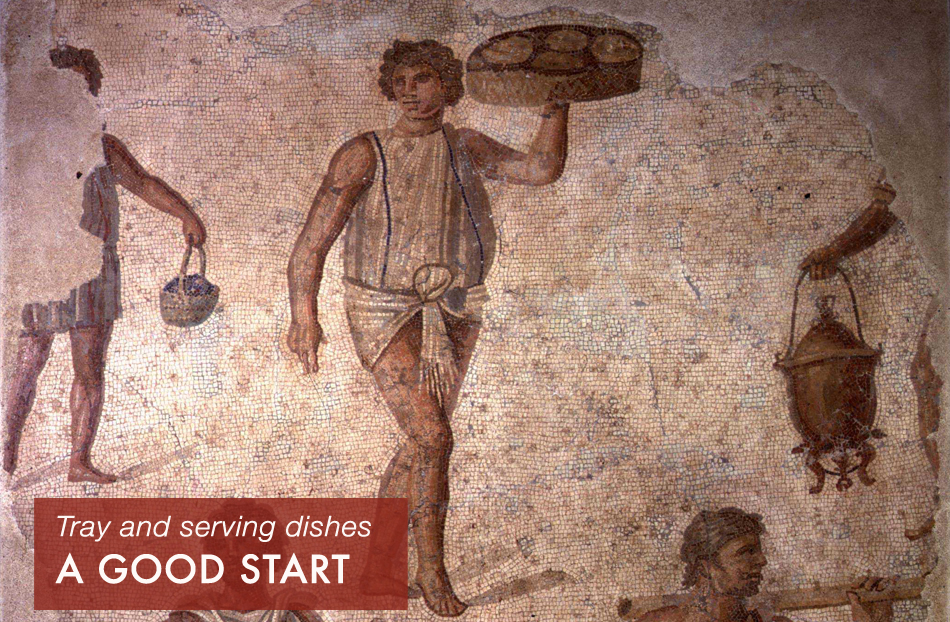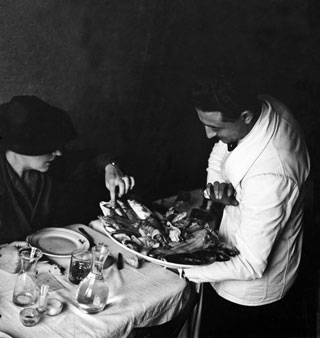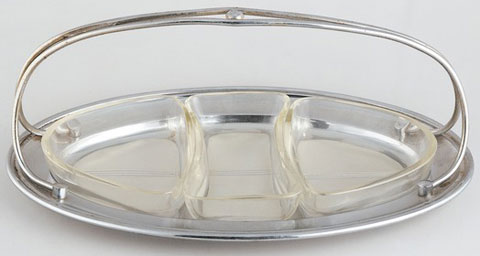

Client choosing seafood in a Rome restaurant, 1937, photo by Regine Relang
Alessi, Starter dish, 1927
Top: Mosaic from Carthage showing preparations for a banqueto, 180–190 A.D. Paris, Musée du Louvre
The custom of having a starter before lunch or dinner is a very old one. The Romans introduced their banquets with the gustus or gustatio, an initial course of light bites, which always included hard-boiled eggs. With the passage of time and changing customs, the starter underwent many changes both as regards the choice of foodstuffs and the method of service.
The evolution in the design and production of objects for use in the kitchen and at lunch also regarded the method of presenting the starter, which became established as such with the spread of service à la russe and its rules regarding the various courses. The taste for functionality and decoration meant that the simple tray was in part replaced by the hors d'oeuvre dish.
This object consists of a base, generally made of metal or porcelain, equipped with handles, and a series of receptacles in crystal, glass or porcelain in different shapes and sizes, which fit perfectly onto the base like tesserae in a mosaic. In order to make things easier for guests and for reasons of hygiene, special cutlery should always be placed next to the hors d'oeuvre dishes for picking up and serving the starters.

